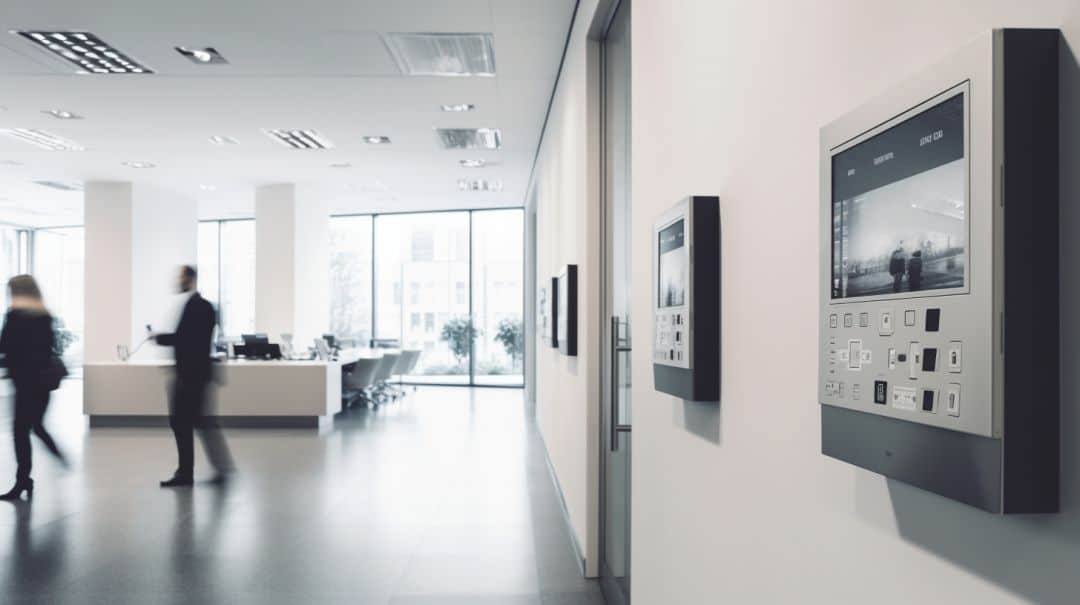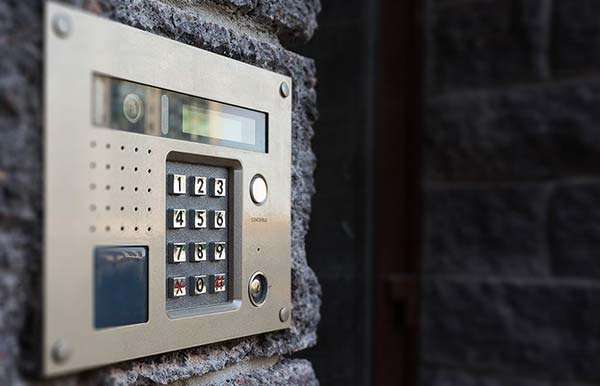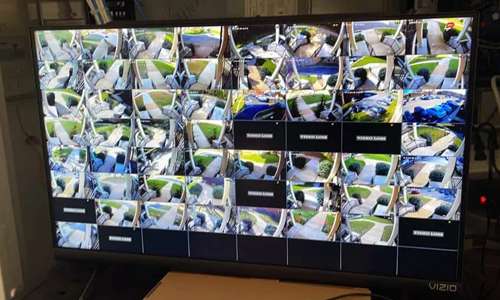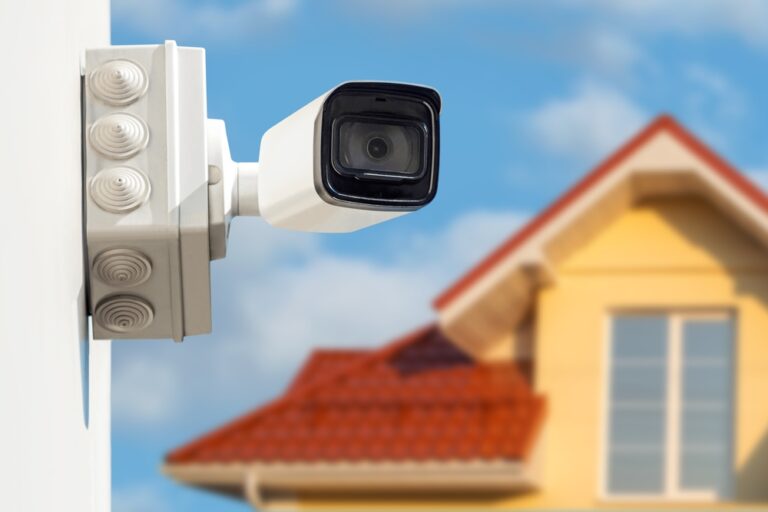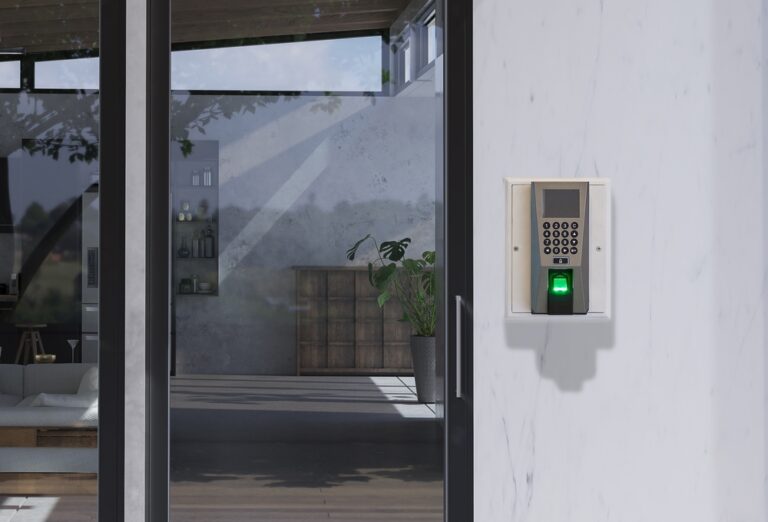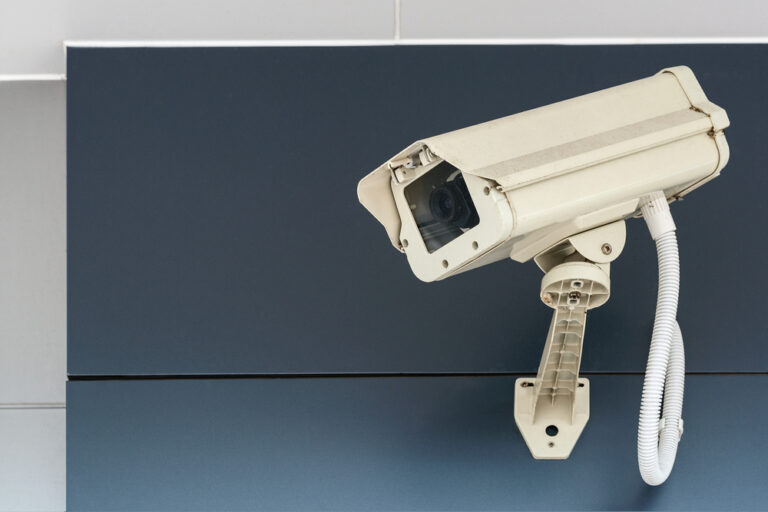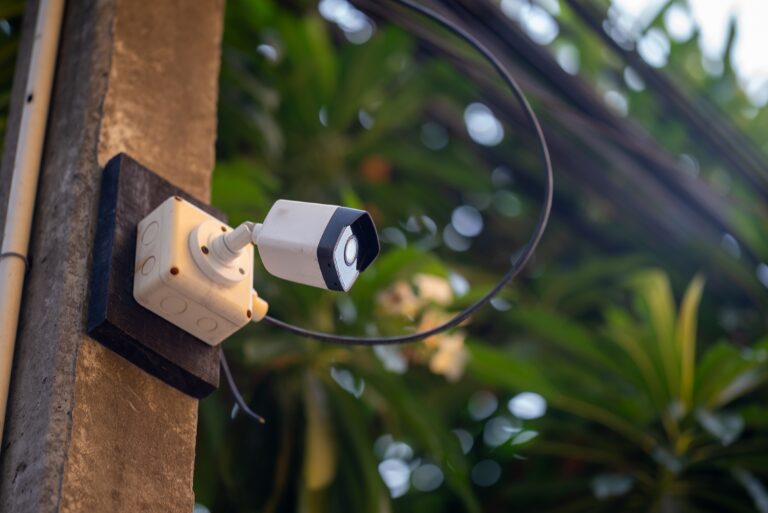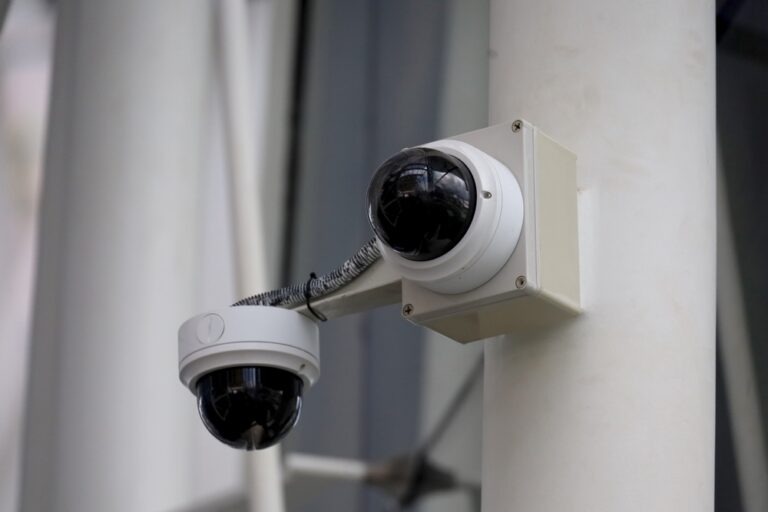- 1) Key Takeaways
- 2) Smart Intercom Systems
- 3) Voice-Activated Intercom
- 4) Biometric Intercom Solutions
- 5) Cost-Effective Intercom Options
- 6) DIY Intercom Installation
- 7) Multi-Room Intercom Systems
- 8) Tenant Communication via Intercom
- 9) Intercom System Compatibility
- 10) Video Quality in Intercom Systems
- 11) Remote Monitoring via Intercom
- 12) User-Friendly Intercom Interfaces
- 13) Mobile App Control for Intercoms
- 14) Intercom Systems with Encryption
- 15) Cloud-Based Intercom Solutions
- 16) Audio Clarity in Intercom Systems
- 17) Retrofitting Old Intercom Systems
- 18) Outdoor-Ready Intercom Systems
- 19) Scalability in Intercom Systems
- 20) Two-Way Communication Features
- 21) Power Backup for Intercom Systems
- 22) Intercom System Upgrades
- 23) Intercom System Troubleshooting
- 24) Secure Intercom Protocols
- 25) Visitor Management via Intercom
- 26) Emergency Response Features in Intercoms
- 27) Hands-Free Intercom Operation
- 28) Low-Light Video Intercom Capabilities
- 29) Intercom System Bandwidth Requirements
- 30) Intercom System Wiring Considerations
- 31) Intercom for Special Needs
- 32) Intercom System ROI
- 33) Security Audit for Intercom Systems
- 34) Voice Recognition Features
- 35) Conclusion
-
36)
FAQs
- 36.1) How are intercom systems evolving to meet smart building needs?
- 36.2) What special considerations help intercoms meet accessibility needs?
- 36.3) Why is high resolution video quality important in IP intercoms?
- 36.4) How can legacy analog intercom systems migrate incrementally?
- 36.5) What bandwidth allocation guidelines help size new IP intercom systems?
Intercom systems represent a foundational communication and access control platform across residential, commercial and institutional facilities. As networking and sensor innovations transform infrastructure capabilities, expectations elevate for intercom technology improving experiences, oversight, and adaptability. This article outlines key terms defining essential intercom system features for powering smart buildings and hybrid workplaces.
Key Takeaways
| Expanding Integration & Intelligence | Emphasis on User Experiences |
|---|---|
| Modern IP intercoms interface security platforms enabling centralized monitoring, automation apps and video analytics | Inclusive interface design, accessibility options, hands-free operation, and remote access promote positive user experiences |
| Future-Proofed Scalability | Ongoing Management Importance |
|---|---|
| Distributed architecture, standardized components, and modular upgrades sustain flexible site expansions | From installation testing and audit reviews to lifecycle replacement planning, ongoing diligent management maintains maximal intercom system value |
Smart Intercom Systems
Smart intercom systems incorporate network connectivity via PoE or WiFi for expanding core communication, security and analytic functionalities through integration. Standard analog intercoms get replaced by IP-based solutions enabling:
- Mobile administration/smartphone access control
- Central monitoring/recording with video surveillance systems
- Supporting site-wide ecosystems like occupancy sensors and access control
- Analytics gleaning usage insights and diagnostics
These platform connectivity capacities allow administrators to better manage intercom infrastructure supporting users while aligning intercom improvements with broader smart facility roadmaps.
Voice-Activated Intercom
Voice-activated intercoms allow users engaging two-way intercom communications hands-free using natural verbal cues instead of manual switch controls. Voice assistant integration powers capabilities like:
- Wake word triggers – “Hello Door Intercom”
- Voice commands opening doors
- Building occupants list voice identification
- Intuitive requests – “Let my guest in” / “I’m stuck in the elevator”
This improves convenience reducing interaction barriers while expanding access options for those with disabilities. It also strengthens on-site vocal analytics.
Biometric Intercom Solutions
Biometric intercoms identify authorized users via unique personal attributes for contactless access control instead of badges, PIN codes or keys. Supported recognition methods include:
- Fingerprint scans
- Facial detection
- Iris/retina matching
- Voice verification
Door releases activate after biometric credential authentication for approved building occupants while denying unfamiliar visitors. This fortifies security preventing unauthorized access via stolen credentials or tailgating while better logging traffic.
Cost-Effective Intercom Options
While advanced smart IP intercom systems enable the richest capabilities, analog and basic digital options still play roles where budget remains important. Cost-effective intercom solutions balancing functionality include:
| Wired Analog | Wireless Digital | Hybrid Options |
|---|---|---|
| Inexpensive upfront cost | No cabling needs simplifying installs | Mix analog/digital for specific needs |
| Reliable performance | Building flexibility adding/moving units | Retrofit smart modules into legacy setups |
| Simple operation | Panel/mobile interfaces | Remain affordable upgrading capabilities |
Knowing use cases allows appropriately right-sizing intercom investments mixing and matching appropriate technologies.
DIY Intercom Installation
While commercial intercom solutions require professional design and implementation, DIY consumer models allow homeowners basic hands-on assembly for residential access enhancement. However, DIY intercom installation still warrants careful planning considering:
- Wired or wireless connectivity needs
- Video vs audio-only requirements
- Integration goals with existing smart home ecosystems
- Outdoor environmental protection for external placements
- Available in-wall power outlets or sufficient battery capacities
- Audio speaker wattage ensuring voice clarity
With thoughtful selection aligned with use intentions, handy homeowners can tackle basic video doorbell and multi-room audio intercom deployment gaining communication and entry control convenience.
Multi-Room Intercom Systems
Multi-room intercom systems link localized intercom stations throughout larger residences enabling room-to-room and building-wide communication. This facilitates:
- Connecting major rooms like bedrooms, kitchens and finished basements
- One-touch site-wide paging triggering speaker output across all locations
- Streamlining collaboration and conversations between family members
- Announcing visitors verbally to conveniently alert home occupants
Provisions like contact closures also integrate multi-room intercoms with household automation platforms or remote smart device apps advancing whole home coordination.
Tenant Communication via Intercom
Shared residential buildings rely extensively on intercom functionality fostering tenant communication for visitor access and announcements. Solutions balancing privacy and community engagement include:
*Video entry intercoms at lobby/entry points verifying invited guests which tenants approve remotely before granting access with personalized codes.
- Integrations with tenant directories/CRM platforms streamlining visitor identification.
- Select in-unit stations containing LED message boards for non-audio notices from property managers regarding amenities, events and policy changes.
These capabilities nurture tenant lifecycle connections vital for retention and referrals in multi-family properties while sustaining security.
Intercom System Compatibility
IP intercom systems provide extensive compatibility interfacing with devices like WiFi routers and PoE switches for networking flexibility. They also readily:
- Interface sensors like door/window contacts extending statuses
- Integrate video surveillance recorder footage displaying at stations
- Sync native mobile apps, emails and voice assistant ecosystems
- Support ONVIF, SIP and RTSP protocols for video interoperability
- Bridge analog models retaining legacy investments
Selecting intercom systems embracing software integration, modern protocols and expansive device synergies maximizes value realizing broader smart infrastructure advancement.
Video Quality in Intercom Systems
Crisp, detail-rich video proves essential for identifying visitors at doors and recognizing distress situations like accidents for appropriate response. Video quality factors include:
- Camera sensor resolution and low light specifications
- Sufficient internet upload/download speeds
- Consistent PoE or WiFi signal reliability
- HEVC video compression balancing clarity and bandwidth
- Display monitor size, resolution and color accuracy
HD and megapixel network video intercom cameras fully realize visual acuity capturing events meaningfully. This gains importance as video analytics leverage images for object/pattern detection too.
Remote Monitoring via Intercom
While traditional intercom systems operate locally at activating stations, remote monitoring via intercom now increasingly provides expansive mobility. Capabilities include:
- Smartphone visitor screening/entry approvals
- Tablet delivery notifications directing drop-offs
- Automations securing open gates or doors on schedules
- Cloud hosting video intercom call archives securely
- Multi-site centralized video guarding of access points
Administrators monitor and control any number of distributed intercom endpoints in real time from desks or on-the-go enabled by IP connectivity.
User-Friendly Intercom Interfaces
Intuitive, accessible intercom controls also prove vital for smooth user experiences meeting diverse needs. Thoughtful interface design considerations include:
- Tactile buttons sized and spaced optimally
- Visible backlit iconography and text displays
- Audible prompts guiding visitors clearly
- Multilingual menu settings accommodating occupants
- Frame rate/quality adjustments customizing video
- Integrated hearing assistance amplification
Embracing ergonomic and inclusive design principles maximizes positive first impressions while ensuring effective ongoing access transactions.
Mobile App Control for Intercoms
Native mobile apps transform administrative conveniences managing multi-unit intercom deployments through anytime/anywhere software capabilities allowing:
- Adding/deleting access credentials and permissions to specific units or groups
- Reviewing historical video intercom event clips for audits
- Configuring automated unlock schedules synchronized with other systems
- Receiving real time SMS or push notification alerts to devices
- Diagnosing technical issues with usage metrics and logs
This reduces reliance on resident gatekeepers while strengthening visibility safeguarding properties remotely.
Intercom Systems with Encryption
Protecting sensitive intercom communications and access transactions warrants utilizing systems with integrated encryption measures ensuring:
- Private voice/video exchanges secured from interceptions
- Safely encoded personal identifiable credentials verifying visitors
- VPN pathways authenticating devices and traffic flows end-to-end
- Audit logs tracking source media access demonstrating compliance
NSA approved 256-bit AES algorithms now provide baseline expectations qualifying solution security robustness against data theft.
Cloud-Based Intercom Solutions
Cloud-based intercom solutions supply refined versatility centralizing infrastructure across unlimited end points. Benefits over purely localized systems include:
- Central dashboard programming/monitoring building-wide
- Easy regional administrator role delegation without on-site demands
- Automated backups ensure video/data continuity if disasters occur
- Scales sites and devices without added equipment
- Reduces maintenance logging securely into stations remotely
Migrating to cloud intercom platforms proves optimal for managing multi-location and growing organizations.
Audio Clarity in Intercom Systems
Crisp, full-duplex audio clarity makes or breaks intercom call comprehension critical for access decisions and emergency communications. Key variables influencing voice intelligibility cover:
- Sufficient speaker wattage and sensitivity
- Advanced noise suppression algorithms
- Appropriate microphone types/positional tuning
- Adequate internet bandwidth allotment
- Frequency response across necessary ranges
- Volume adjustment flexibility
- Refined audio processing in modern IP intercoms enriches successful hear/response interactions even in challenging environments.
Retrofitting Old Intercom Systems
While ripping and replacing legacy analog intercom systems bears extensive disruption and expenses, retrofitting old intercom systems offers interim migration. Upgrade modules add IP enhancements:
- Enabling mobile interfaces/notifications as needed
- Bridging networks to access control and surveillance systems
- Embedding remote service diagnostics via clouds
- Adding keypad RFID credentialing where applicable
- Providing overflow wireless backup connectivity
This maintains existing analog end device utility until scheduled lifecycle milestones allow fuller platform replacement.
Outdoor-Ready Intercom Systems
Rugged outdoor-ready intercom systems endure exposure to weather, tampering and other external hazards through specialized provisions including:
- Weatherized housings with sealed gaskets meeting IP65/IP66 ingress ratings
- Vandal resistant plating/fasteners and polycarbonate face plates
- Thermostats maintaining stable internal component temperatures
- Conformal coated circuit boards resisting moisture damage
- Special surface treatments sustaining through UV, winds and corrosion
Suitability finishing exterior access points preserves long term operation and appearance despite harsh conditions.
Scalability in Intercom Systems
Growing from single doors to campus-wide access ecosystems warrants selecting scalable intercom systems supporting steady incremental expansion. Solutions offering fluid transition paths balance:
- Distributed architecture avoiding centralized bandwidth bottlenecks
- Standardized equipment interfaces and video codecs
- Seamless adding door stations, lobbies and guarding posts
- Expanding native mobile credentials universally
- Adding power supplies, switches and storage economically
This modular pathway keeps upgrades affordable while extending value from initial investments sustainably.
Two-Way Communication Features
Unlike simple ringer doorbells, multi-functional intercom systems allow two-way communication features fostering natural conversations verifying visitors including:
- Real time digitized voice discussions initiated from stations
- Full duplex exchanges without voice clipping or gaps
- Echo cancellation for clarity in noisy or confined entries
- Call routings directed locally or bridged externally
- Verbal assistances aiding vision or mobility impaired guestsSuccessful dialogues with guests before allowing access remains pivotal for maintaining security.
Power Backup for Intercom Systems
While commercial facilities integrate uninterrupted power supplies, even residential intercoms warrant power backup assurances through:
- Integrated lithium batteries sustaining hours of station operations during grid failures
- External portable battery packs prolonging runtimes beyond baseline capacities
- Local UPS units injecting conditioned electricity preventing damaging dirty power
- Smart power management features like sleep/low energy modes between events
Maintaining vital communication abilities despite outages or disasters better protects occupants during times of crisis.
Intercom System Upgrades
Evolving organization use cases, technology improvements or lifecycle replacement needs make intercom system upgrades inevitable. Strategic forward-looking upgrades enhance:
- Video integration with surveillance monitoring workflows
- Mobility enabled by apps aligning with remote working shifts
- WiFi/cloud connectivity building platform continuity
- Analytics utilization spotting macro trends and diagnostics
- API expansions bridging gaps between access, automation and CRM systems
This sustains intercom solutions adding value contiguously despite exponential market motion.
Intercom System Troubleshooting
Basic intercom system troubleshooting measures limit escalation costs resolving performance issues. However, leveraging professional assistance from certified vendors often proves prudent ensuring configuration integrity, sustainably supporting specialized equipment. Still, initial triage steps cover:
- Inspecting physical components verifying intact housings, unobstructed cameras/microphones and undamaged wiring
- Testing power connectivity checking for correct voltages, polarity, clean grounds and stability across modules
- Assessing network activity including bandwidth utilization, error rates, encryption and switching functionality between devices
- Reviewing application controller errors noting access denial events, offline endpoints and authentication failures
- Retesting equipment step-by-step confirming baseline individualized operation prior to interdependencies
Isolating failure domains quickens restoration avoiding full system debugging refractors.
Secure Intercom Protocols
Beyond baseline encryption safeguarding communications, secure intercom protocols provide critical standards verifying authentic transmissions sourcing from vendor equipment to trusted platforms. Secure protocols include:
- 802.1X – Authenticating devices connecting to networks
- TLS – Ensuring uniquely encoded sessions
- SRTP – Protecting media streams end-to-end
- HTTPS – Securing web interfaces with certificates
- SSH – Enabling encrypted command line administration
Together these mutual authentication mechanisms defend against data theft, man-in-the-middle and replay attacks compromising credibility.
Visitor Management via Intercom
Streamlining visitor management remains pivotal across environments from corporate lobbies to gated communities. Intercoms integrated with access control strengthen oversight:
- Restricting building ingress to verified invitees only
- Maintaining safety without surplus reception labor
- Accommodating visitor lists to conference rooms
- Automating expirations based on scheduled appointments
- Syncing directories from Office/Google calendars displaying expected guests
This expands capabilities beyond basic access into deeper coordination with daily workflows.
Emergency Response Features in Intercoms
During crises, emergency response features allow rapid assistance requests directly from intercom stations for urgent reactions. Capabilities include:
- Programmable speed dial buttons to central monitoring posts
- Video analytics detecting slipping, injuries or forced entries
- Location data notifications conveying incident address specifics
- Mobile alerts to facility managers seeking aid
- Temporary mode conversions to emergency phones
These assist vulnerable community members while meeting regulatory obligations proactively.
Hands-Free Intercom Operation
Certain individuals navigating accessibility needs warrant options like hands-free intercom operation enabling function through automatic capabilities including:
- Built-in presence detection sensors noticing approaching visitors
- Voice detected wake triggering initiating video/audio sessions
- Volume amplification assisting hard of hearing guests
- Smart locks accepting access codes or credentials via prox cards without manual entry
- Face recognition granting familiar resident entry after identification
Intuitive hands-free experiences allow vulnerable groups independently engaging intercoms securely.
Low-Light Video Intercom Capabilities
Quality low-light video proves essential capturing nighttime porch activity with clarity given active crime occurrence statistics. Intercoms meeting benchmark imaging include:
- High resolution mega-pixel CMOS camera sensors
- Infrared (IR) or low lux LED illumination built-in
- Ambient light frequency flicker synchronization
- High signal to noise ratio and wide dynamic range
- Enhanced noise reduction and contrast balancing
Together this extends identifiable video coverage into late evenings guarding households.
Intercom System Bandwidth Requirements
Supporting multi-channel audio and HD streaming video warrants planning bandwidth appropriately when sizing intercom infrastructure across typical guideline provisioning:
- G.722 audio – 64kbps per intercom call
- H.264 video – Up to 3Mbps per station continuously
This covers basic capacities for clear quality at 30fps. Additional factors like mobile clients, door locks and other data flows add supplemental demand. Building headroom allows maintaining positive experiences as needs evolve.
Intercom System Wiring Considerations
While WiFi wireless models ease deployment, hardwired PoE intercoms provide maximum reliability and security warranting planning:
- Cat 5e/Cat6 standards supply bandwidth overhead
- Shielded F/UTP cables reject interference
- Waterproof conduits protect outdoor runs
- Proper terminations following pinouts
- Voltage Drop Calculators determine wire gauge
Professional installation and testing helps validate infrastructure backbone longevity supporting mission critical communications.
Intercom for Special Needs
Safety and inclusion needs spotlight improving intercoms for special needs individuals through tailored features like:
- Customizable interface themes optimizing visibility
- Integrated teletypewriter (TTY) compatibility supporting the deaf
- Audible voice prompts guiding vision impaired guests
- Lower activation areas suiting wheelchair heights
- High contrast contoured buttons enabling limited dexterity
Embracing equitable access principles benefits all occupants engaging intercom functionality independently.
Intercom System ROI
Assessing key performance indicators helps measure project success and refine future return on investment expectations covering:
- Initial deployment costs per door
- Integration labor effort with other systems
- Administration workload reduction due to automation
- Liability mitigation from video incident oversight
- Energy efficiency savings from sensors and scheduling
- Extending equipment lifespans delaying replacements
Evaluating this blend of financial, environmental and risk variables provides comprehensive qualifying insight.
Security Audit for Intercom Systems
Security audits provide ongoing independent expert evaluation identifying potential system risks and prioritizing remediation. Assessments analyze:
- Reviewing software versions and patch currency
- Scanning open network ports and active services
- Testing authentication mechanisms
- Searching embedded data and cloud instances for sensitive personal information
- Confirming logging captures and continuity protections
Establishing a vulnerability management roadmap buttresses trust in layered controls safeguarding facilities and occupants.
Voice Recognition Features
Advanced voice recognition features supplied via integrated speech engines or API expansion modules allow visitors or administrators:
- Verbally commanding intercom actions hands-free like paging units or toggling privacy modes
- Identifying occupants by stored voice prints granting access if matched
Conclusion
Intercom technology continues advancing exponentially across integration, intelligence, mobility and automation dimensions. This drives rising infrastructure ambitions as environments embrace video-centric access control plus deeper synergies with complementary systems. First and foremost though, core communication depends on resilient components capably streaming reliable video door calls anywhere securely.
Key considerations qualifying solutions balance sufficient bandwidth and storage, analytics-ready imaging, accessibility options and longevity finishing. As cloud hosting, permissions programming and native mobile administration gain adoption, edge computing design prevents overreliance on connectivity. Holistic provisioning remains paramount.
By methodically optimizing equipment selection, professional installation, feature configurations, ongoing management and eventual lifecycle upgrades planning, modern intercom solutions promote smarter workplaces and safer households. IP convergence offers too many advantages to wholesale replace without evaluating strategic modular steps first.
In all environments though, intercoms provide frontline community connectivity securing people along with facilities. This makes regularly revisiting offerings important as smarter possibilities continue emerging.
FAQs
How are intercom systems evolving to meet smart building needs?
Intercoms now integrate IP connectivity enabling video integration with security and analytics platforms for centralized monitoring, mobile administration and expanded automation capabilities. This allows intercoms aligning with broader smart workplace and building roadmaps.
What special considerations help intercoms meet accessibility needs?
Features assisting those with impairments cover high contrast and backlit large interfaces, customizable audio/visual settings, integrated hearing assistance and TTY compatibility, sufficient clearance for mobility aids, automatic hands-free activation triggers, and remote app controls.
Why is high resolution video quality important in IP intercoms?
Beyond identifying visitors at doors, HD camera imaging allows computer vision analytics to detect slip/fall incidents for emergency response, perform threat object detection, and facilitate overall site visibility/forensics leveraging rich visual details.
How can legacy analog intercom systems migrate incrementally?
Instead of full analog rip-and-replace, digital IP modules can integrate adding mobile apps, cloud services, video recording and other smart functionalities. This cost-effectively retains existing stations while progressing capabilities.
What bandwidth allocation guidelines help size new IP intercom systems?
Plan approx. 64 Kbps per audio intercom call, while video flows consume up to 3 Mbps continuously per station. Additional mobile client, data processing and door lock flows add supplemental demand covered by extra bandwidth headroom.


